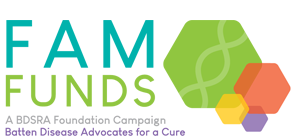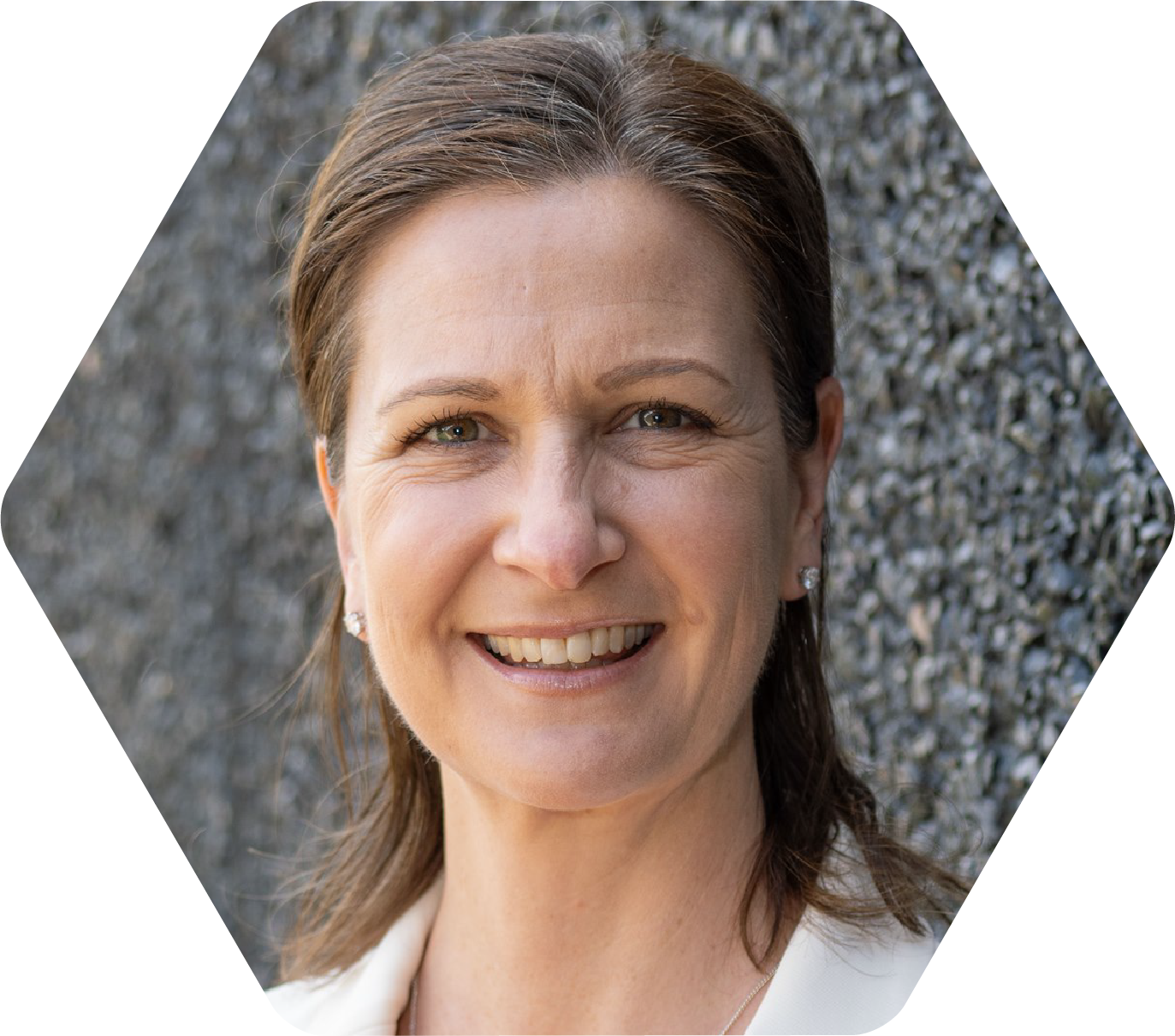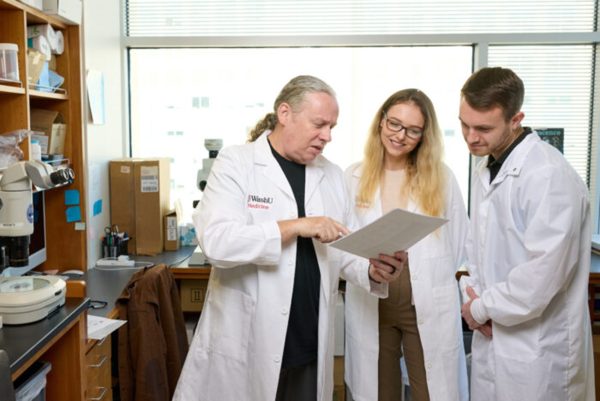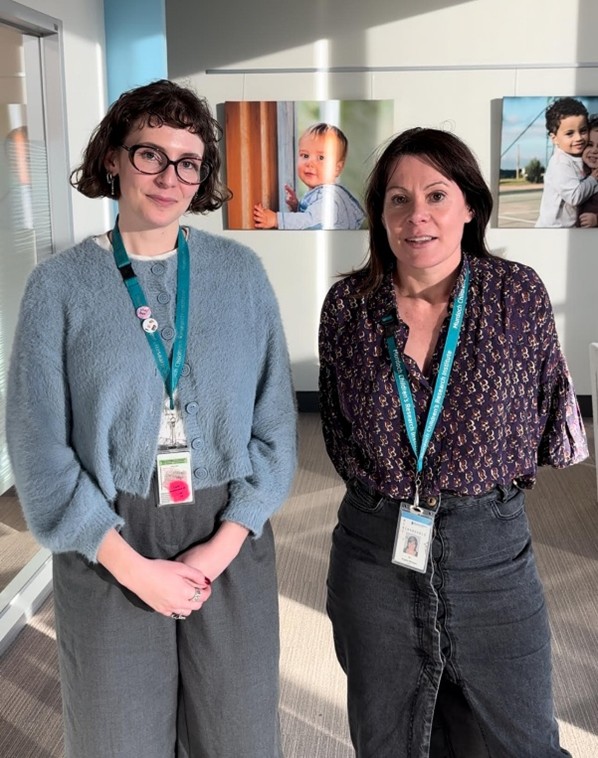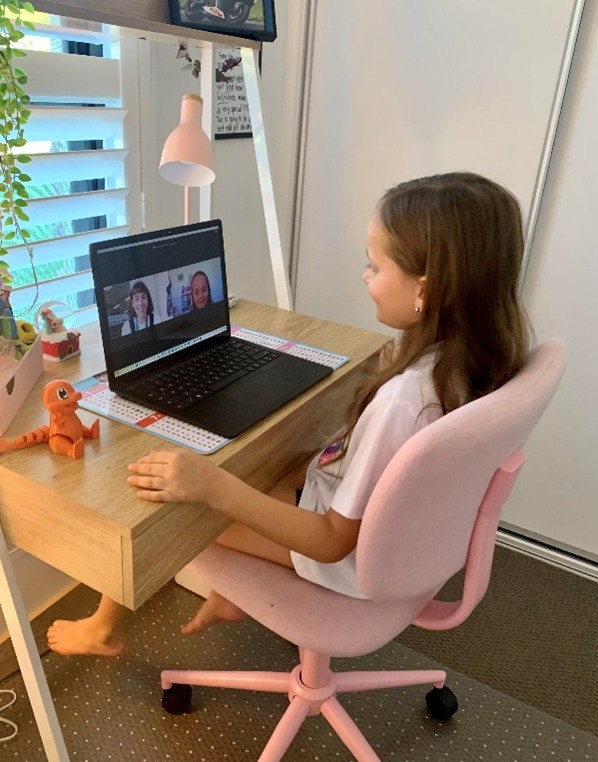It’s time for the first Batten disease research updates of 2025! BDSRA Foundation’s Head of Research & Medical Affairs Dr. Ineka Whiteman breaks down Batten disease clinical program updates, research news & opportunities, and resources in her monthly column, as seen in BDSRA’s monthly newsletter, The Illuminator.
The Power of Family Involvement in Batten Disease Research
In Batten disease research, as with other rare diseases, true progress is best achieved when patients and families are at the center of the conversation. Their lived experiences provide critical insights that drive meaningful advancements in science, clinical care, and drug development.
Family perspectives help inspire research ideas and shape study designs, ensuring they reflect real-world challenges and priorities; patients and their families offer invaluable data through participation in natural history studies, biobanking, and involvement in clinical trials.
Beyond the science, patient and family involvement keeps research grounded in its true purpose – improving lives. By fostering strong collaborations between researchers, clinicians, and the Batten disease community, we create solutions that are not just innovative but practical and impactful together.
This month’s Research Highlights, in which I was honored to have been involved, are outstanding examples of how family involvement can make a profound difference in the fight against Batten disease. On behalf of the research teams spotlighted in these two highlighted articles, I want to extend our deepest gratitude to all the families who have contributed to this important work. Whether through participation in speech and language assessments, sharing insights with researchers, or generous tissue donation, your dedication and generosity help bring hope to countless others. Thank you for being an essential part of this journey.
Research Highlights
Neurodegeneration occurs in the nervous system of the bowel in Batten disease
We know that individuals with Batten disease often suffer from severe gastrointestinal issues. This new study led by Prof. Jonathan Cooper, Dr. Ewa Ziolkowska, and Matt Jansen at Washington University in St. Louis may have uncovered why – the neurons controlling the gut (the enteric nervous system) degenerate over time.
In this study using mouse models of CLN1 and CLN2 disease, the team found that neurons in the gut progressively die, leading to slower digestion and worsening symptoms with age. Importantly, these findings were also evident in bowel tissue from a child with CLN1 disease, confirming the clinical importance of the pathological findings in mice.
Remarkably, the team discovered that gene therapy given early in life could protect these gut neurons in mice with CLN1 and CLN2 disease, improving digestion and even extending lifespan.
This exciting study, and the new therapeutic possibilities it unveils, were directly inspired by Batten families, who highlighted the significant impact of gastrointestinal issues on quality of life and the need for more research in this area.
The article was published in Science Translational Medicine and can be accessed here.
Read more about the research journey here.
Photo: Prof. Jonathan Cooper, PhD, (left), pictured with co-first authors Ewa Ziółkowska, PhD (center), and Matt Jansen (right). Photo credit: Matt Miller, Washington University in St. Louis; medicine.washu.edu.
New research on speech and language in CLN2 and CLN3 disease
Progressive speech and language impairment is a prominent feature of Batten disease, yet, to date, there has been no systematic characterization of speech and language in this condition.
Understanding the decline in communication in Batten disease helps us better understand the disease biology, which may be an important measure of treatment efficacy in clinical trials, and critically, can help inform families and clinicians optimize speech & language therapy approaches.
In this study, led by Prof. Angela Morgan and PhD candidate Lottie Morison at the Murdoch Children’s Research Institute (MCRI) in Melbourne, Australia, the team sought to understand the speech and language features, support needs, and strengths in the two most common forms of Batten disease: CLN2 and CLN3 disease.
The results of this research, published in the Journal of Inherited Metabolic Disease demonstrate (1) the importance of clinical education and awareness that speech and language difficulties can be early signs of Batten disease; (2) tailored speech and language therapies are important to support speech and language skills, especially training communication partners; and (3) many people with Batten disease would benefit from early Augmentative and Alternative Communication (AAC) access to support communication for as long as possible.
This paper is freely available to read here.
Free Patient Resources are also available, including a Plain Language Summary of this research and Fact Sheets about speech & language in CLN2 and CLN3 Batten disease. Thanks to the Translational Centre for Speech Disorders at MCRI.
Download the PDF resources here.
Left Photo: First author Lottie Morison (left) and Principal Investigator Prof. Angela Morgan (right)
Right Photo: Study participants participate in speech and language assessments over Zoom with MCRI’s Lottie Morison.
NCL2025 Congress website is live!
On behalf of the NCL2025 Organising Committee, we are thrilled to be hosting the 19th International Congress on Neuronal Ceroid Lipofuscinosis (NCL) in the stunning surrounds of the Sunshine Coast, Queensland, Australia. As the premier conference on Batten disease, the bi-annual NCL Congress brings together world-leading researchers, healthcare providers, industry partners, innovators, and patient advocacy leaders worldwide.
In 2025, we are excited to combine NCL Congress with the BDSRA Australia Family Conference, providing an invaluable opportunity for meaningful engagement and shared learning between Congress delegates and the Batten disease family community.
The website is now live – please visit NCL 2025. Here you can register to stay up-to-date with the latest meeting information and news including venue and accommodation details, programs, and abstract submissions.

As always, thank you for your support and dedication to our shared mission.
Warm regards,

CLINICAL PROGRAM UPDATES
Clinical Trial Tracker
Keep up-to-date with the latest clinical trial and natural history study news with our Clinical Studies Chart on BDSRA’s website. Check it out by clicking here.
PUBLICATION HIGHLIGHTS – December 2024-January 2025
Characterisation of sleep in a mouse model of CLN3 disease revealed sex-specific sleep disturbances.
Kane KM, Iradukunda D, McLouth CJ, Guo LZ, Wang J, Subramoniam A, Huffman D, Donohue KD, O’Hara BF, Sunderam S, Wang QJ.
J Sleep Res. 2025 Jan 28:e14461. doi: 10.1111/jsr.14461. Online ahead of print.
PMID: 39873354
Clinical, Pathological, and Molecular Findings in a Mexican Patient With Neuronal Ceroid Lipofuscinosis Type 2: Support for Pathogenicity of the c.1226 G>T Variant and for Presence of Cherry-Red Spot in This Disease.
Corcuera-Delgado CT, Ramírez-Ristori AG, Pérez-Muñoz E, Mendizábal-Rodríguez ME, Villarroel CE.
Pediatr Dev Pathol. 2025 Jan-Feb;28(1):78-82. doi: 10.1177/10935266241286723. Epub 2024 Dec 23. PMID: 39716776
Activation of D2-like dopamine receptors improves the neuronal network and cognitive function of PPT1KI mice.
Zhao JQ, Feng BY, Ye ZL, Ma XY, Du JZ, Li JM, Wu WL, Gao JJ, Li SJ, Peng SY, Huai JS, Ge LH, Lu CB.
Acta Pharmacol Sin. 2025 Feb;46(2):338-352. doi: 10.1038/s41401-024-01377-7. Epub 2024 Sep 16. PMID: 39284877
Drug-refractory epilepsy due to a novel CLN5 mutation: A report of three patients from an Indian family.
Joy S, Agarwal A, Handique J, Fatima M, Garg D, Sharma P, Rajan R, Garg A, Faruq M, Srivastava AK.
Seizure. 2025 Jan;124:66-70. doi: 10.1016/j.seizure.2024.11.017. Epub 2024 Nov 29. PMID: 39667065
Speech, Language and Non-verbal Communication in CLN2 and CLN3 Batten Disease.
Morison LD, Whiteman IT, Vogel AP, Tilbrook L, Fahey MC, Braden R, Bredebusch J, Hildebrand MS, Scheffer IE, Morgan AT.
J Inherit Metab Dis. 2025 Jan;48(1):e12838. doi: 10.1002/jimd.12838. PMID: 39821609
Twenty-Year Survival Analysis of Adeno-Associated Virus Vector Serotype 2-Mediated Gene Therapy to the Central Nervous System for CLN2 Disease.
Sondhi D, Kaminsky SM, Rosenberg JB, Rostami MR, Hackett NR, Crystal RG.
Hum Gene Ther. 2024 Jan;36(1-2):28-35. doi: 10.1089/hum.2024.182. Epub 2025 Jan 2. PMID: 39745261 Clinical Trial.
Gene therapy ameliorates bowel dysmotility and enteric neuron degeneration and extends survival in lysosomal storage disorder mouse models.
Ziółkowska EA, Jansen MJ, Williams LL, Wang SH, Eultgen EM, Takahashi K, Le SQ, Nelvagal HR, Sharma J, Sardiello M, DeBosch BJ, Dickson PI, Anderson JB, Sax SE, Wright CM, Bradley RP, Whiteman IT, Makita T, Grider JR, Sands MS, Heuckeroth RO, Cooper JD.
Sci Transl Med. 2025 Jan 15;17(781):eadj1445. doi: 10.1126/scitranslmed.adj1445. Epub 2025 Jan 15. PMID: 39813314
Neuronal ceroid lipofuscinosis 11 (CLN11) presenting with early-onset cone-rod dystrophy and learning difficulties.
Maximiano-Alves G, do Amaral Moreto Caravelas R, Gonçalves TAP, Corniani KF, Nather JC, Geraldi-Tomaselli CV, Frezatti RSS, Fernandes RMF, Dos Santos AC, Marques W, Tomaselli PJ.
Neurogenetics. 2025 Jan 15;26(1):20. doi: 10.1007/s10048-025-00800-3. PMID: 39812704
Trehalose Ameliorates Zebrafish Emotional and Social Deficits Caused by CLN8 Dysfunction.
Licitra R, Della Vecchia S, Santucci L, Vivarelli R, Bernardi S, Santorelli FM, Marchese M.
Cells. 2025 Jan 5;14(1):55. doi: 10.3390/cells14010055. PMID: 39791756
Further description of the phenotypic spectrum of neuronal ceroid lipofuscinosis type 11.
Nóbrega PR, Paiva ARB, Amorim Junior AD, Lima PLGSB, Cabral KSS, Barcelos IP, Pessoa ALS, Souza-Lima CFL, Castro MAA, Freua F, Santos ES, Rocha MMV, Maia RE, Araújo RS, Ramos JDG, Resende RG, Carvalho GDS, Valença LPA, Lima de Carvalho JR Jr, Melo ES, Pedroso JL, Barsottini OGP, Houlden H, Kok F, Lynch DS.
Genet Med. 2025 Jan;27(1):101291. doi: 10.1016/j.gim.2024.101291. Epub 2024 Oct 9. PMID: 39394881
Open-label evaluation of oral trehalose in patients with neuronal ceroid lipofuscinoses.
Della Vecchia S, Gammaldi N, Ricca I, Mero S, Doccini S, Ardissone A, Bagnoli S, Battini R, Colombi E, Favaro J, Furlan R, Giordano L, Ingannato A, Mandelli A, Manzoni FMP, Milito G, Moroni I, Nacmias B, Nardocci N, Parmeggiani L, Pezzini F, Pietrafusa N, Sartori S, Specchio N, Trivisano M, Ets ACL, Simonati A, Santorelli FM; A-NCL ETS Group.
J Neurol. 2025 Jan 7;272(1):94. doi: 10.1007/s00415-024-12790-7. PMID: 39775944
Two-year follow-up of gait and postural control following initiation of recombinant human tripeptidyl intracerebroventricular enzyme replacement therapy in two atypical CLN2 patients.
Soangra R, Grant-Beuttler M, Chang H, Wang RY.
Sci Rep. 2025 Jan 7;15(1):1042. doi: 10.1038/s41598-024-82157-5. PMID: 39762319
CLN6-related continuum phenotype caused by aberrant splicing.
Invernizzi F, Castellotti B, Reale C, Panteghini C, Colangelo I, Solazzi R, Ragona F, Giordano L, Galli J, Rossi Sebastiano D, Marucci G, Cuccarini V, Didato G, Gellera C, Garavaglia B, Granata T, Canafoglia L.
Epilepsia Open. 2024 Dec 24. doi: 10.1002/epi4.13119. Online ahead of print. PMID: 39718800
Neuronal ceroid lipofuscinoses type 7 (CLN7): a case series reporting cross sectional and retrospective clinical data to evaluate validity of standardized tools to assess disease progression, quality of life, and adaptive skills.
Kayani S, BordesEdgar V, Lowden A, Nettesheim ER, Dahshi H, Messahel S, Minassian BA, Greenberg BM.
Orphanet J Rare Dis. 2024 Dec 19;19(1):468. doi: 10.1186/s13023-024-03448-8. PMID: 39702211
GABAAR-PPT1 palmitoylation homeostasis controls synaptic transmission and circuitry oscillation.
Tong J, Gao J, Qi Y, Gao Z, Wang Q, Liu Y, Yuan T, Ren M, Yang G, Li Z, Li J, Sun H, Zhao X, Leung YY, Mu Y, Xu J, Lu C, Peng S, Ge L.
Transl Psychiatry. 2024 Dec 18;14(1):488. doi: 10.1038/s41398-024-03206-1. PMID: 39695089
The use of nanocarriers in treating Batten disease: A systematic review.
Henke L, Ghorbani A, Mole SE.
Int J Pharm. 2024 Dec 16:125094. doi: 10.1016/j.ijpharm.2024.125094. Online ahead of print. PMID: 39694161 Review.
Genetic spectrum of neuronal ceroid lipofuscinosis & its genotype-phenotype correlation -A single centre experience of 56 cases.
Thuppanattumadam Ananthasubramanian S, Padmanabha H, Ravindranadh CM, Kenchiah R, Bhatia S, Santhoshkumar R, Kumar TS, Sukrutha R, Arunachal G, Karthik K, Nagappa M, Nashi S, Mahale R, Viswananthan LG, Pooja M, Nagaraj AR, Ravi Shekar J, Yasha TC, Mahadevan A, Sinha S.
J Neurol Sci. 2024 Dec 9;468:123338. doi: 10.1016/j.jns.2024.123338. Online ahead of print. PMID: 39675099
Six induced pluripotent stem cell lines from fibroblasts of individuals with CLN3-related conditions.
Dwojak E, O’Mard D, Zou J, Wassif CA, Burkett S, Eckhaus M, Rueda Faucz F, Padilla C, Villasmil R, Zheng W, Dang Do AN.
Stem Cell Res. 2024 Dec;81:103563. doi: 10.1016/j.scr.2024.103563. Epub 2024 Sep 18. PMID: 39317061
A Novel Variant of the CTSD Gene Associated with Juvenile-onset Neuronal Ceroid Lipofuscinosis Type 10: A Case Report and Literature Review.
Çiçek S, Yıldırım M, Tabanlı FP, Köse E, Bektaş Ö, Teber S.
Cerebellum. 2024 Dec 10;24(1):7. doi: 10.1007/s12311-024-01773-z. PMID: 39656415 Review.
[Study of a case of Juvenile neuronal ceroid lipofuscinosis due to compound heterozygous variants of PPT1 gene].
Zhang D, Xu F, Bao Y, Xu Y.
Zhonghua Yi Xue Yi Chuan Xue Za Zhi. 2024 Dec 10;41(12):1469-1472. doi: 10.3760/cma.j.cn511374-20240927-00510.
PMID: 39653353 Chinese.

